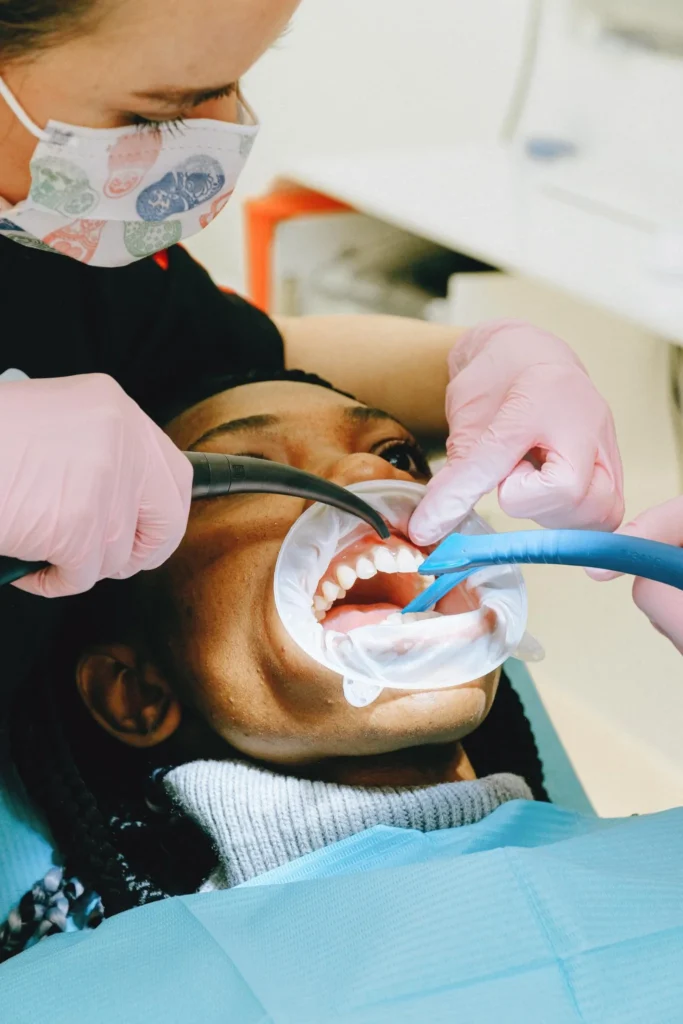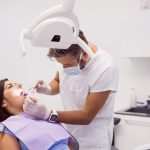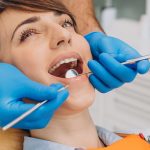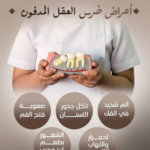Most people know they should brush and floss, but understanding the difference between gingivitis vs periodontitis can make all the difference when it comes to saving your teeth.
These two stages of gum disease are often confused, but knowing how they differ and how they progress can help you take action before permanent damage occurs. If your gums are red, tender, or bleed easily, you could already be showing early signs of trouble.
Let’s explore how gingivitis and periodontitis develop, what signs to watch out for, and how to protect your oral health.
What Is Gingivitis?
Gingivitis is the earliest form of gum disease. It usually begins with mild irritation and gum inflammation caused by plaque buildup around the gum line. If caught early, gingivitis can often be reversed with proper oral hygiene habits, like brushing, flossing, and regular dental cleanings.
The good news? At this stage, there is no damage to the bone tissue or connective tissue that supports your teeth. Symptoms may include swollen gums, bleeding gums when brushing, and persistent bad breath, but some people may not notice any symptoms at all.
What Is Periodontitis?
If gingivitis is left untreated, it can progress into periodontitis, a more severe gum infection. This stage involves deeper inflammation and the formation of gum pockets, where harmful bacteria start to destroy the bone and connective tissue. The result? Receding gums, loose teeth, and, in severe cases, tooth loss.
Periodontitis progresses through several stages, from early periodontitis to moderate periodontitis and, eventually, to advanced periodontitis. Each stage brings more tissue damage and requires more aggressive treatment to control the infection.

Gingivitis And Periodontitis: The Main Difference
When comparing periodontitis vs gingivitis, the most important factor is tissue and bone involvement. Gingivitis affects the gum tissue only, while periodontitis impacts deeper structures, including bone loss.
While gingivitis may cause your gums to appear red or swollen, periodontitis often leads to gum recession, visible gaps between the teeth, and increased tooth sensitivity.
In gingivitis, you might have inflamed gums, mild tenderness, and bleeding during brushing. In periodontitis, you will have deep gum pockets, loose teeth, and severe gum disease symptoms that do not go away with basic cleaning.
What Happens If You Have Poor Oral Hygiene?
The biggest factor behind both gingivitis and periodontitis is poor oral hygiene. Without daily brushing and flossing, plaque and tartar buildup provide the perfect environment for bacteria to thrive. This triggers a chronic inflammatory response, damaging healthy gum tissue and causing further complications.
Other risk factors include smoking, diabetes, hormonal changes, and even certain medications. Habits like chewing tobacco or skipping regular dental visits can make the condition worse. For this reason, you must go for periodontal care.
How Periodontitis Develops from Gingivitis?
Sometimes, the early signs are subtle, maybe your gums bleed when flossing, or you notice a bit of gum tenderness. These may seem minor, but are actually clear signs of gingivitis and periodontitis starting to form.
If ignored, that inflammation leads to gum pockets, where bacteria build up and begin damaging surrounding structures. Tissue damage and bone loss don’t happen overnight, but once they begin, they’re harder to reverse.
What Happens If You Leave It Untreated?
Untreated gingivitis doesn’t just stay mild; it worsens. Over time, the infection spreads deeper, and simple brushing won’t be enough. When periodontitis reaches more advanced stages, additional treatment like bone grafting, soft tissue grafts, or guided tissue regeneration may be necessary.
In severe cases, even oral antibiotics or deep cleaning methods like scaling and root planing are needed to manage the infection and prevent further damage.

Preventing Gum Disease Before It Starts
Preventing gum disease always comes back to proper oral hygiene. Brush your teeth twice a day, floss regularly, and use an antiseptic mouthwash or antimicrobial mouthwash as advised by a dental professional. Make sure to clean along the gum line where plaque tends to accumulate.
Regular visits to a dental hygienist help remove plaque and tartar buildup that can’t be cleaned at home. These visits also allow for early detection, before issues progress into something more serious.
When to See a Dentist?
If you experience symptoms like bleeding gums, inflamed gums, or persistent bad breath, it’s time to see a dental professional. Early treatment can help reverse gingivitis and stop it from becoming periodontitis.
Even if you’re not experiencing discomfort, a check-up every six months can help detect warning signs of gingivitis vs periodontitis early. Prevention and early care are the best ways to avoid complications like tooth loss, gum infection, or even costly surgical treatments.
Don’t wait for tooth pain or gum recession to act. Left untreated, gum disease can silently cause long-term damage to your smile. Book your appointment at Pure White Medical Center today. Call us at +971 4 288 3131, email info@purewhiteclinic.com, or book your consultation online. Let us help you protect your gums before it’s too late.
Frequently Asked Questions
What’s the main difference between gingivitis and periodontitis?
Can gingivitis turn into periodontitis?
How can I know if I have gingivitis?
Is periodontitis curable?
How often should I see a dentist for gum disease prevention?
You should visit a dentist at least twice a year for check-ups and professional cleanings. Individuals with gum disease, diabetes, or other risk factors may need more frequent visits to monitor gum health and prevent serious dental complications.

















